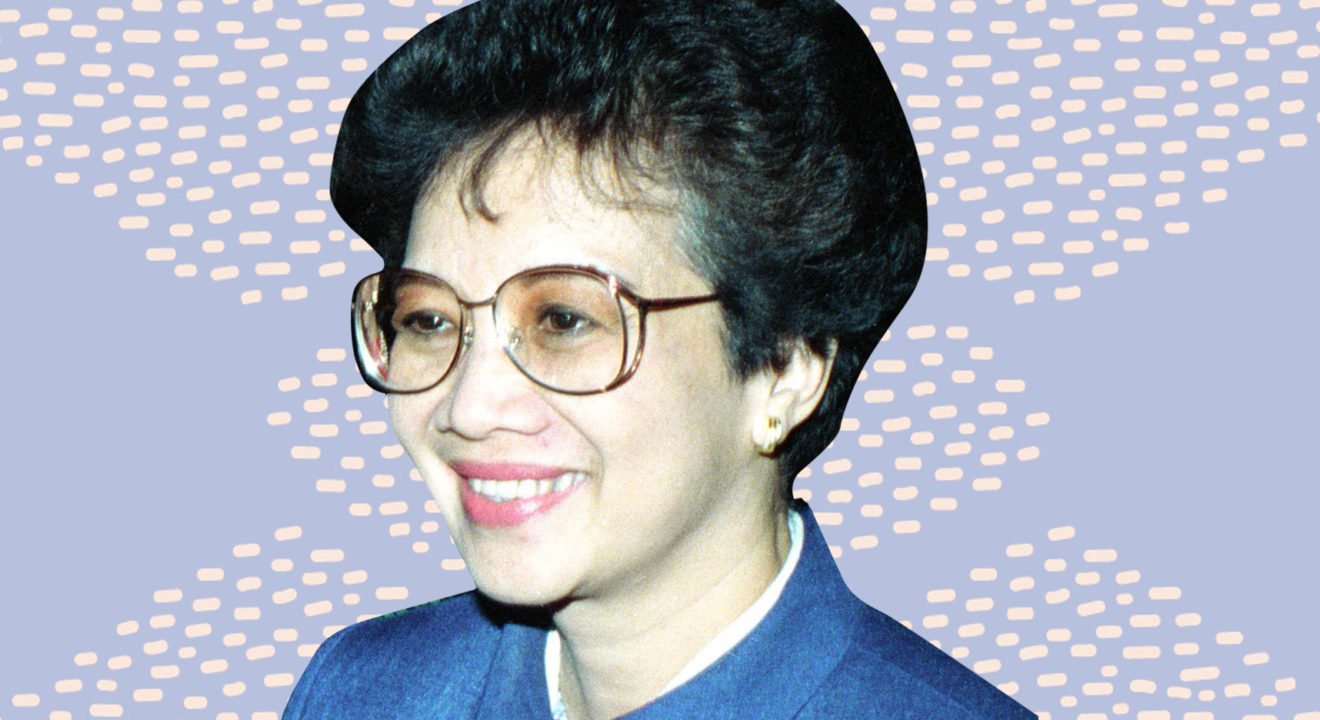Accomplish February 17, 2017


In our ongoing series #WomenThatDid ENTITY profiles inspirational and famous women in history whose impact on our world can still be felt today. If you have a suggestion for a historical powerhouse you would like to see featured tweet us with the hashtag #WomenThatDid.
Name: Corazon Aquino
Lifetime: January 25, 1933 – August 1, 2009
What She Is Known For: Corazon Aquino was a Filipina politician, who became the 11th president of the Philippines, the first woman to hold the office and the first female president in Asia. She was the most prominent figure involved in the 1986 People Power Revolution, which ended the 21-year long authoritarian rule. It restored democracy to the Philippines and because of this, she became TIME’s “Woman of the Year.”
Why We Love Her: Aquino graduated valedictorian from her class before her family moved to the United States. There she graduated from College of Mount Saint Vincent in New York and worked on a Republican presidential candidate’s campaign. She returned to the Philippines to study law, but left school when she married Benigno Aquino, Jr. They had five children and after living in the United States and Manila, found it difficult to adjust to provincial life.
However, she was always adamant that she was a self-proclaimed “plain housewife.” Her husband was a prominent government official who served both as governor and senator. Unknown to most, she sold off her inheritance to fund his campaigns.
When martial law was declared in 1972, her husband was among the first arrested. After eight years in prison, President Jimmy Carter intervened and urged the Filipino president to allow the family to live in exile in the United States. Three years later, her husband returned to the Philippines and was assassinated as he exited the plane at the airport. She returned a few days later and led a funeral procession of two million attendees. After this, she emerged as a leader in the movement.
When Aquino lost the 1985 election amidst allegations of fraud, she led a three-day peaceful protest. Then, after being sworn in as president on Feb. 25, 1986, she immediately drew up plans for a new constitution that focused on civil liberties, human rights and social justice issues. It also aimed to limit the power of the executive branch and to reestablish the bicameral Congress.
When her term was due to end in 1992, a legal loophole allowed her to run again. She declined and led the first peaceful transition of power in June 1992. She remained active in the political arena, helping ensure that the Philippines remained a democracy.
She died of cancer in 2009 and a ten-day mourning period was announced. She was revered as the “mother of Philippine democracy” and “the housewife who led a revolution.” However, she remained adamant that it was the Philippine people that restored democracy, not her.
Fun Fact: In 1985, Aquino ran for president against the incumbent after receiving a petition with one million signatures calling for her election. The then president was in failing health and was said to have let his wife run most of the government. Despite this, he attacked Aquino’s lack of government experience. In response, Aquino simply said: “May the better woman win in this election.”